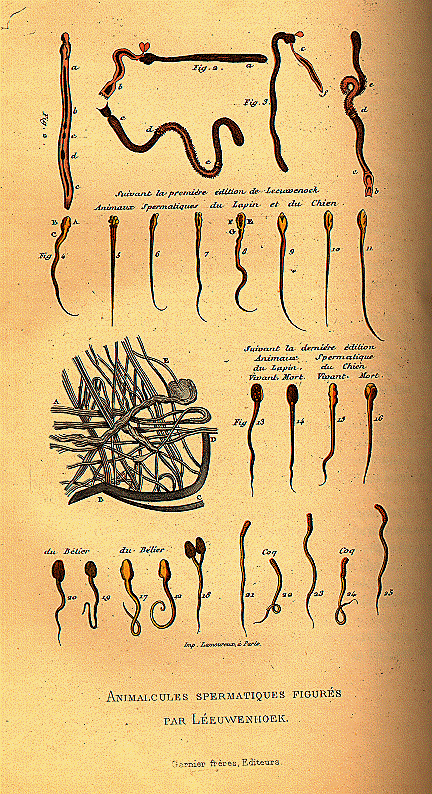 |
 |
 |
 |

Aristotle posed (but did not answer) the question of whether the embryo always existed or whether it was brought into being in the reproductive act. Those who opted for the former hypothesis believed in the existence of a homonculus, a miniature living being which pre-existed reproduction and which grew and developed during gestation: a belief advocated by such prominent biologists as Swammerdam and Malpighi. The other school of thought believed in epigenesis, the notion that the ovum was initially undifferentiated, and developed into an organism only after fertilization. Maupertuis, an important advocate of epigenesis, argued that the preformation theory could not explain why most offspring have characteristics of both parents, nor could it account for the existence of hybrids or congenital "monsters."
Another question that occupied eighteenth-century biologists was the possibility of spontaneous generation: the spontaneous creation of life from inanimate matter. From classical times it was believed that life was generated in the mud at the bottom of streams and that maggots developed spontaneously out of rotting meat. Harvey's research in reproduction, summarized in the dictum "ex ovo omnia" ("everything comes from the egg"), suggested that all animal and plant life reproduced sexually, but the discovery of microbes made possible by the microscope opened the question again.
At first the tide seemed to turn against the theory of spontaneous generation: in 1668, for instance, Franceso Redi demonstrated that maggots did not form in meat that was carefully protected from contamination, and Nehemiah Grew was the first to demonstrate that even plants reproduce sexually.
But several developments in the 1740s gave renewed support to the spontaneous generation theorists. In 1740, Charles Bonnet discovered parthenogenesis, the creation of life from an unfertilized egg, when he observed that female aphids could sometimes reproduce without exposure to a male. In 1748, John Turberville Needham offered (faulty) evidence of spontaneously generated microbes in a sealed flask of broth. Even early in the nineteenth century, Buffon came out in favor of spontaneous generation.
The experimental evidence, however, was too strong for the believers in the theory. Maupertuis challenged Needham's discoveries in 1751, and in 1768 Lazzaro Spallanzani convincingly disproved the notion of spontaneous generation; in 1779 he discovered the function of the sperm and the ovum. In 1860, Louis Pasteur finally put the question to rest by confirming Spallanzani's results to the satisfaction of nearly all scientists.